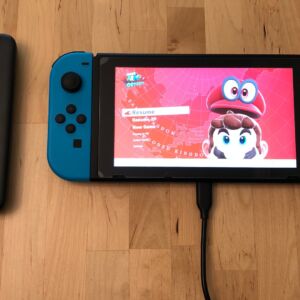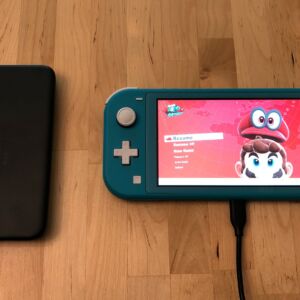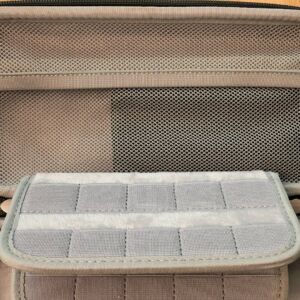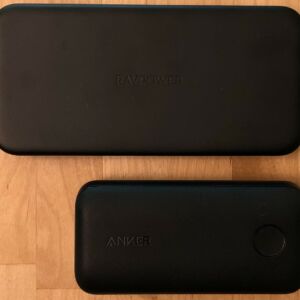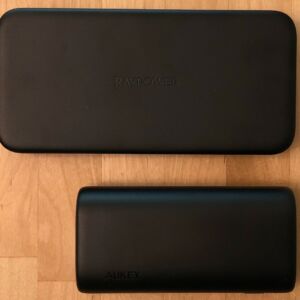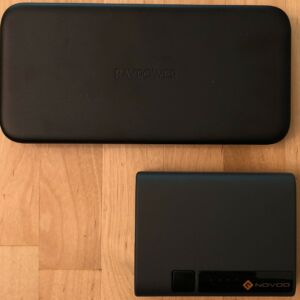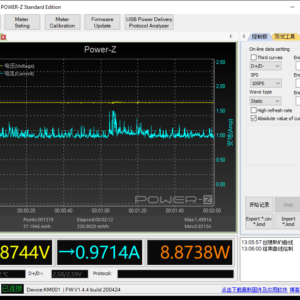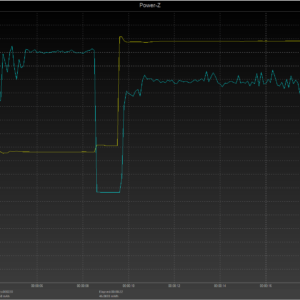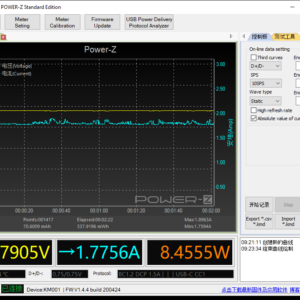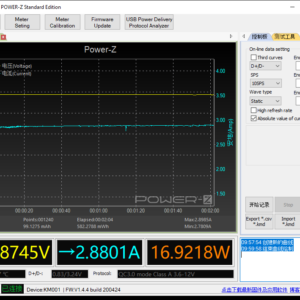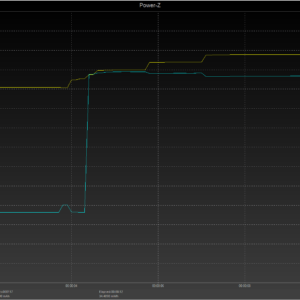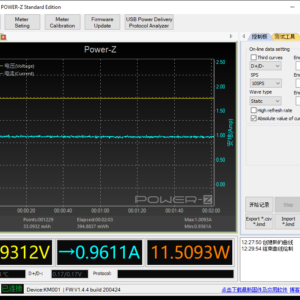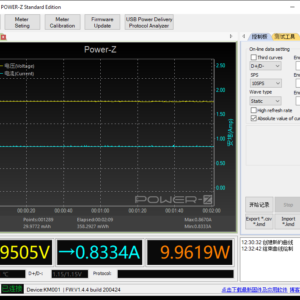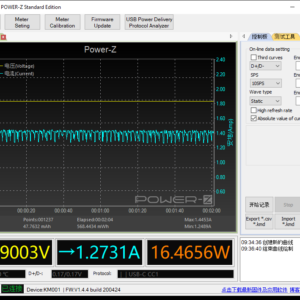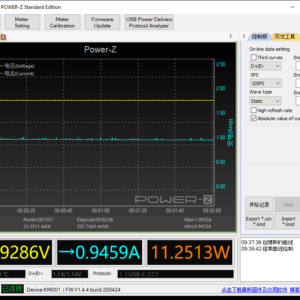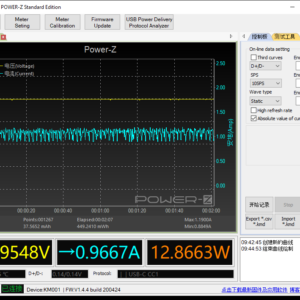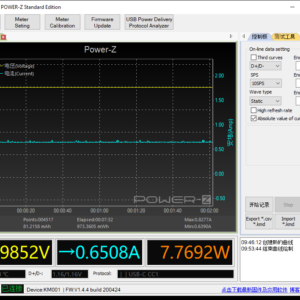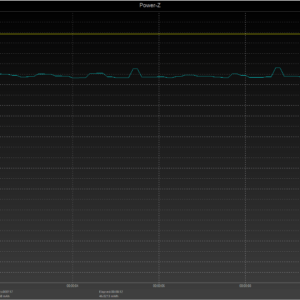RAVPower PD Pioneer 10000 18W - Thin and inexpensive, but basic power bank
Summary
The RAVPower PD Pioneer 10000 18W provides several fast charging standards. Supporting iPhones, Samsung, and even Huawei. It also supports pass through charging and dual device charge. But both at greatly reduced outputs.
Overall
-
Performance
(4.5)
-
Design
(4.5)
-
Safety
(4)
-
Recharge Time
(5)
User Review
( vote)Pros
- Fast charges iPhone, Samsung Galaxy, Google Pixel, LG, Motorola, and Huawei phones
- Charges Switch while you play
- Fits in most Switch carrying cases
- Supports pass through charging
- Charge two devices at once, but without fast charging
- Within FAA limits for lithium batteries and flights
Cons
- Quick Charge 3.0 over USB-C is against USB-C specs
- Can’t be recharged by Nintendo Switch AC Adapter
- Doesn’t include a USB-C to USB-C cable
Disclosure: As an Amazon Associate I earn from qualifying purchases. I purchased the product in this review.
No products found.
[wpcd_coupon id=6112]Model: RP-PB173
Tech Specs:
- Ports: USB-C, USB-A, micro-USB
- USB-C Output:
- 18W USB-C Power Delivery 3.0 (5V/3A, 9V/2A, 12V/1.5A)
- Quick Charge 3.0
- Samsung Adaptive Fast Charging
- Huawei FCP
- Apple 2.4A
- USB-A Output:
- 18W Quick Charge 3.0
- Samsung Adaptive Fast Charging
- Huawei FCP
- Apple 2.4A
- Input:
- 18W USB-C PD (5V/3A, 9V/2A)
- 18W Quick Charge 3.0 micro-USB
- Capacity: 10,000mAh | 37Wh
- Size: 5.6 x 2.7 x 0.6 inches | 143 x 69 x 16 mm
- Weight: 7.5 oz | 212 grams
Learn more about Fast Charging.
Included In Box:
- RAVPower PD Pioneer 10000 18W
- micro-USB cable, 2 feet
- USB-C to micro-USB adapter
- Travel pouch
Good For:
- Commute
- Travel
- iPhone
- Android
- Nintendo Switch (handheld)
- iPad Pro (pre-2018)
Estimated Number of Charges:
- iPhone 6/7/8/SE: 3.5 charges
- iPhone Plus/X/XR: 2 charges
- Samsung Galaxy S8/S9: 2 charges
- iPhone 11, Samsung Galaxy S10/S20: 2 charges
- Nintendo Switch (2017): 4 hours of play
- Nintendo Switch (2019): 6.5 hours of play
- Nintendo Switch Lite: 6.5 hours of play
First Impression
The No products found. is a thinly designed power bank. Pairs better with holding alongside your phone or fitting in a back pocket. But is larger and heavier than more compact options. The enclosure it simple, with all USB ports on the same side. And the button and LEDs just around the corner. The button has a distinct click, much more so than with most other power banks I’ve tested. It may be annoying for some. But others will appreciate the noisy feedback.
Compared To Similar Power Banks
| Charger | No products found. | Anker PowerCore 10000 PD Redux Review | No products found. Review | Novoo PowerCube Mini 10000 Review |
| Ports | USB-C, USB-A | USB-C, USB-A | USB-C, USB-A | USB-C, USB-A |
| Output | 18W USB-C PD Quick Charge 3.0 | 18W USB-C PD | 18W USB-C PD Quick Charge 3.0 | 18W USB-C PD Quick Charge 3.0 |
| Capacity | 10,000mAh | 10,000mAh | 10,000mAh | 10,000mAh |
| Cable | USB-micro cable w/USB-C adapter | USB-C to USB-C cable | USB-C to USB-C cable | USB-C to USB-A cable |
| Dimensions | 5.6 x 2.7 x 0.6 in 7.5 oz | 4.2 x 2 x 1 in 7.0 oz | 4.1 x 2 x 1 in 6.4 oz | 2.9 x 2.3 x 1 in 6.3 oz |
| Price | No products found. | Price not available | No products found. | Price not available |
Prices are from Amazon Product Advertising API, last updated on 2024-11-21.
You can see more USB-C power banks here.
Device Testing
Check with your device’s manufacturer to verify which charging standards it supports.
USB Power Delivery & Quick Charge 4+ Phones
- Apple iPhone 8/X/XR/XS/11/SE
- Essential Phone
- Google Pixel
- LG ThinQ/V30
- Razer
- Samsung Galaxy S8/S9/S10/S20
- Samsung Galaxy Note 8/9/10
- Xiaomi Mi 8/9
- ZTE Axon Pro 9/10
Using an iPhone 8 for testing we find USB PD phones will fast charge over the USB-C port. iPhones will need to use a USB-C to Lightning cable, not included. And Android phones will need a USB-C to USB-C cable, also not included.
For older and newer iPhones the USB-A port supports Apple 2.4A. An older, but still functional fast charging standard. Older iPhones (4-7) can fast charge using USB-A. Newer iPhones will charge ~15 minutes faster using USB-C.
Quick Charge 3.0 Phones
- HTC
- LG
- Motorola
- Nokia
- Samsung Galaxy
- Sony
- Xiaomi Mi 5/6
- ZTE
Using a Moto G6 for testing we see Quick Charge will fast charge over the USB-A port. The Moto G6 fails to get QC over USB-C, as that is an issue with that particular model phone. Other QC supporting Android phones would be expected to work over USB-A or USB-C.
The includes micr0-USB cable with USB-C to micro-USB adapter will support fast charging.
Nintendo Switch
Works well for all model Nintendo Switch in handheld/tabletop mode.
- Nintendo Switch (original) – Charges while you play, but the original model Switch under draws at 12V. So it won’t charge as fast as a similar charger offering 9V or 15V (12W vs 18W).
- Nintendo Switch (2019 update) – Charges near its max rate while playing and sleeping.
- Nintendo Switch Lite – Charges near its max rate while playing and sleeping.
It will not support the Switch’s dock, as it doesn’t offer the required output.
Learn more about charging the Switch.
Pass Through Charging
Pass through charging allows a portable charger to both charge itself and a connected device. The power received from the wall charger splits. Some to the portable charger’s own batteries. And some to the connected device. How it handles the split varies. And there are more inefficiencies than normal.
This portable charger supports pass through charging under these connections:
- Input: USB-C, Output: USB-A (6W)
- Input: micro-USB, Output: USB-A (6W)
- Input: micro-USB, Output: USB-C (5W)
Pass through charging is useful when you only have one USB wall charger. But it is not recommended to use this feature on a regular basis. It puts more heat and stress on the portable charger. Which will affect its lifespan. It can also provide an inefficient charge to your device. Again, not great for its own battery’s lifespan.
If you like to have the option when traveling, fine. But don’t set this up next to your bed at home every night.
Using the Included micro-USB Cable with USB-C Adapter
As a general rule it is safe to use a USB-C to micro-USB adapter. That is an adapter that turns a micro-USB connection into a USB-C connection. That’s the type of adapter included with this charger’s micro-USB cable.
It is not safe to use the opposite, turning a USB-C connection into a micro-USB connection. That would allow for connections against the USB standards. And is potentially dangerous to devices.
My USB tester showed the micro-USB cable with USB-C adapter includes a 56k Ohm resistor. That resistor is required under USB-C specs for all USB-C to USB-A cables.
The cable charged my Moto G6 at the same rate as a regular USB-C to USB-A cable.
No Fast Charging With Two Devices
The total output is limited to 15W. With no fast charging available when both USB ports are in use.
When you connect the second device you’ll notice the charging resets on the first. This is the power bank stepping down to a 5V output level. If you disconnect the second device you’ll want to unplug and replug the first. To make sure fast charging turns back on.
This limitation is typical of most power banks. The few I’ve seen which allow for two fast charging devices are unusually large. There is a limit to how much current can cross its circuits without extra hardware. Which adds size, weight, and cost.
Most smaller devices will revert to their normal charging rate. Which will continue to charge the battery while they are in use. Total charge time for two devices is about the same. Whether you fast charge them one at a time. Or charged them at a slower rate together.
Quick Charge 3.0 Over USB-C
The presence of Quick Charge over USB-C is against USB-C specifications. Such chargers have been around for years without issue. But we don’t know what the future holds.
Under section 4.8.2 of USB-C specifications a proprietary charging method cannot change the voltage of USB-C output (between 4.40V and 5.25V) in a manner not defined by USB methods. Quick Charge operates at higher than default voltages. And so goes against the specifications. USB Power Delivery is an open source charging method. Created alongside USB-C, it is with specs even though it also increases voltage. The big difference is USB PD uses communication lines to negotiate power transfer. While proprietary methods take over the data lines for their negotiation. They do so because legacy USB connections, such as USB-A, don’t have comm lines.
There is no known risk with running proprietary charging standards over USB-C. Manipulating the data lines does disrupt data transfers. But when plugging into a wall charger or power bank there is no data transfer anyway. Some USB-C engineers warn against using any USB-C chargers with third party standards. Their concern is unforeseen consequences. Future technology may prove to be incompatible with such configurations. And pulling out a charger several years from now with a new device could have a bad result.
I have not run into any issues with these fast charging standards on this or any other charger. But as it is a spec violation I want you to be informed. If you’re a stickler for meeting USB-C specifications this isn’t a good charger for you. If you’re more pragmatic it works fine and has no known issues.
Summary
The RAVPower PD Pioneer 10000 18W handles as many, if not more, model phones as similar power banks. But it also doesn’t make use of newer technology. It supports USB Power Delivery, Quick Charge (and related standards), Apple 2.4A, and Huawei FCP. Of the major phone brands only OnePlus is lacking a fast charging option.
The included micro-USB cable and USB-C to micro combo will act like a USB-C to USB-A cable. Good for those phones using options other than USB PD. If you have an actual USB-C to USB-A cable to spare that would be better. No small adapter to lose.
The Nintendo Switch charges in handheld mode while you play. Due to the 12V power profile the original model Switch charges slower than it should. But still enough to charge the Switch with the most demanding games. The newer models (August 2019 and later) aren’t affected. The RAVPower also tested with up to an hour longer playtimes than similar 18W/10,000mAh models.
Like most RAVPower power banks it does offer pass through charging. Something its Anker and AUKEY competitors can’t claim. Fast charging isn’t supported in this mode. And it isn’t the healthiest function for device or power bank battery life. But nice to have when traveling and limited to a single power outlet.
It also includes the usual RAVPower travel pouch. Which are my favorites among the brands which offer them. Their pouch includes a small side pocket. Great for separating cables and adapters from the power bank in the main pocket.
About RAVPower
RAVPower has U.S. based support (web, email, phone) and an 18 month warranty. The warranty can be extended to 30 months if you register the product with RAVPower. They are a respected brand within the USB-C community.
Bottom Line
The RAVPower PD Pioneer 10000 18W provides as many fast charging options as you’ll find on one power bank. With capacity and form factor well matched to smartphones. But it isn’t cutting edge with any added functions.
Buy if you:
- Need to fast charge iPhone, Samsung, Pixel, LG, Motorola, or Huawei phone
- Want lower cost, but good brand recognition
- Prefer a thinner design to a fatter, more compact one
Don’t buy if you:
- Want to charge an original model Switch at the fastest rate possible
- Are uncomfortable with the USB-C spec violation
No products found.
You’ll want a USB-C wall charger to quickly recharge this USB-C power bank. I recommend the AUKEY PA-Y18 Minima 18W PD.
Be sure to check the Deals page to see if this or a similar charger is on sale.
Enjoyed this review? Sign up for the Switch Chargers newsletter and get updates on future reviews and Nintendo Switch related deals.






